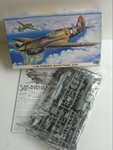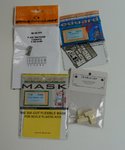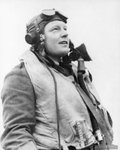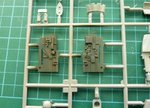ozhawk40
Master Sergeant
Username: Ozhawk40
First name: Peter
Category: Advanced
Scale: 1:48
Manufacturer: Hasegawa
Model Type: Curtiss P-40E-1 41-36236 A29-142
Details: 76 Squadron, Milne Bay, 1942
Aircraft Assignment: S/L Keith "Bluey" Truscott
Accessories: Quickboost exhaust, Eduard Etch and Masks, Ultracast seat. Eduard RAF type seat belts.
Decals: Custom
First name: Peter
Category: Advanced
Scale: 1:48
Manufacturer: Hasegawa
Model Type: Curtiss P-40E-1 41-36236 A29-142
Details: 76 Squadron, Milne Bay, 1942
Aircraft Assignment: S/L Keith "Bluey" Truscott
Accessories: Quickboost exhaust, Eduard Etch and Masks, Ultracast seat. Eduard RAF type seat belts.
Decals: Custom
High on my 'to do' list has been the P-40 of S/L Keith "Bluey" Truscott. Bluey (nicknamed due to his red hair) was the Royal Australian Air Forces 6th highest scorer of WWII. 15 confirmed victories, 3 probables and 2 damaged was the official tally. He used a number of Kittyhawks during his time with 76 Squadon, but is mostly identified with A29-142 and coded 'ID". The aircraft was not bedecked with kill marks or flashy names, but will be an interesting subject none the less. Can't wait to make a start on this one.....
Cheers
Peter
Attachments
Last edited by a moderator:







